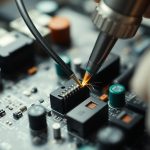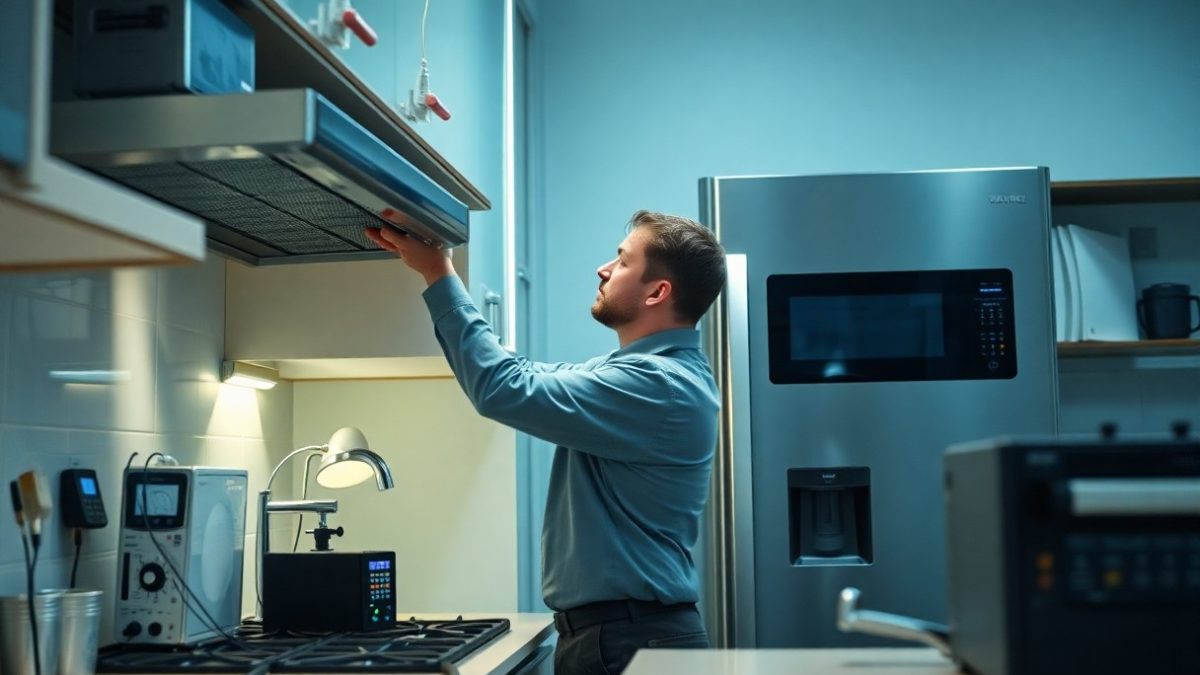
Are You Utilizing The Right Soldering Techniques For Optimal Electrical Connections?
November 1, 2024
How Does The Integration Of Smart Technology Transform Conventional Appliance Installations?
November 5, 2024You may not realize it, but electromagnetic compatibility (EMC) is vital to the effective performance of your appliances. When installing new devices, understanding how they interact with each other and their environment can significantly impact both functionality and safety. EMC ensures that your appliances operate without causing or suffering from electromagnetic interference, thereby enhancing their reliability and lifespan. In this post, we will explore how to assess and achieve optimal electromagnetic compatibility during appliance installation, ensuring a seamless integration into your home.
Understanding Electromagnetic Compatibility (EMC)
Your awareness of electromagnetic compatibility (EMC) is vital for successful appliance installation. EMC refers to the ability of electrical devices to function reliably in their electromagnetic environment without causing interference to other devices or being affected by external interference. This understanding can significantly enhance the performance and longevity of your appliances.
Definition of EMC
With electromagnetic compatibility, you are crucially looking at how electronic devices coexist and operate in the presence of electromagnetic disturbances. It encompasses two key aspects: emission, which is the energy released into the environment, and immunity, which is the device’s ability to withstand such disturbances without malfunctioning.
Importance of EMC in Modern Appliances
By prioritizing electromagnetic compatibility in your appliances, you ensure seamless operation within your electronic ecosystem. This is especially significant as modern devices become increasingly interconnected and complex. They rely on effective communication, and any electromagnetic interference can lead to performance issues, impacting both functionality and safety.
And as more gadgets become crucial in your daily life, the importance of EMC cannot be overstated. Without proper EMC measures, you risk experiencing device malfunctions and disruptions that can lead to costly repairs or replacements. By ensuring that appliances are designed and installed with EMC principles in mind, you enhance their reliability and enhance your overall user experience.
Factors Affecting EMC in Appliance Installation
It is vital to recognize various factors that influence electromagnetic compatibility (EMC) in your appliance installations. Some of these factors include:
- Quality of electrical connections
- Shielding materials used
- Distance from other electronic devices
- Grounding techniques
- Installed appliances’ frequencies
This combination can significantly impact the performance and safety of your appliances.
Design Considerations
Against common belief, effective EMC starts during the design phase. Incorporating proper shielding techniques, component layout, and filtering can minimize interference and bolster the reliability of your appliances.
Environmental Influences
After installation, environmental factors play a significant role in EMC. Elements such as humidity, temperature, and electromagnetic noise from nearby equipment can all affect how your appliances perform.
Considerations relating to environmental influences involve understanding the specific conditions in your installation area. High humidity can degrade insulation materials, while excessive heat may cause electronic components to fail. Additionally, outdoor installations may be subject to higher levels of electromagnetic noise from nearby electronic devices or machinery. By acknowledging these factors, you can take proactive steps to ensure your appliance functions optimally in its environment.
Testing for Electromagnetic Compatibility
Even when you install appliances with care, testing for electromagnetic compatibility (EMC) ensures that your installations won’t interfere with other devices or create unwanted emissions. Proper EMC testing not only validates your appliance’s performance but also enhances its reliability and longevity. By identifying potential issues before final installation, you contribute to a better overall user experience while ensuring compliance with necessary regulations.
Methods of Testing
After determining the need for testing, you can utilize various methods, such as emission testing and immunity testing. Emission testing measures the electromagnetic noise a device generates, while immunity testing assesses how well your appliance can tolerate external electromagnetic disturbances. Using these methods allows you to ensure optimal performance and compliance with regulatory standards.
Standards and Regulations
Before initiating any installation, you should familiarize yourself with the relevant standards and regulations governing electromagnetic compatibility. Compliance with these standards not only guarantees safety but also enhances product performance and marketability.
Due to the increasing reliance on electronic devices, various organizations have set forth standards regarding electromagnetic compatibility. These standards provide guidelines on emission levels and immunity requirements to promote operational reliability. By adhering to these regulations, you can minimize interference and ensure your appliances perform optimally within their intended environments, ultimately safeguarding both your investment and consumer satisfaction.
Common EMC Issues in Appliance Installation
Now, you may encounter several electromagnetic compatibility (EMC) issues during appliance installation. These challenges can arise from poor grounding, inadequate shielding, or the proximity of devices that generate electromagnetic interference. For more information on how to address these challenges, check out The Importance Of EMC Testing In Product Development.
Sources of Interference
Interference in appliance installation can stem from various sources, including wireless devices, fluorescent lighting, and electric motors. These sources can emit electromagnetic radiation that disrupts the performance of nearby appliances, leading to malfunctions or reduced efficiency. You should be aware of these potential disruptors in your environment to minimize their impact on your devices.
Mitigation Strategies
One effective approach to address EMC issues involves implementing various mitigation strategies. This includes using high-quality shielding materials, ensuring proper grounding, and maintaining appropriate distances between sensitive devices and sources of interference.
And, you can also utilize filters and surge protectors to safeguard your appliances from unexpected spikes in electromagnetic interference. By doing so, you will enhance the reliability and performance of your installations. Engaging in proper planning and assessment can significantly reduce the likelihood of EMC issues, ensuring your appliances function smoothly and efficiently.

Best Practices for Ensuring EMC Compliance
Despite the challenges associated with achieving electromagnetic compatibility, adhering to best practices can streamline the installation process. Begin by selecting high-quality components specifically designed to meet EMC standards. Implement proper grounding techniques, and ensure that cables and connectors are shielded to minimize interference. Regularly review your installations to verify compliance with current regulations and standards, fostering an environment that prioritizes reliable appliance operation.
Installation Techniques
Behind every successful appliance installation lies a series of well-defined techniques that enhance EMC compliance. Utilize twisted pair cables for signal transmission, which can effectively reduce electromagnetic interference. Additionally, maintain appropriate distances between power and communication lines to mitigate cross-talk and interference. Proper placement of components along with adequate ventilation will further support an EMC-friendly environment.
Maintenance and Monitoring
At the core of sustaining EMC compliance is a commitment to ongoing maintenance and monitoring practices. Regularly check your appliances and their surroundings for potential sources of interference, such as neighboring electronic devices or environmental factors.
This ongoing maintenance is vital for identifying any emerging issues that may disrupt electromagnetic compatibility. Schedule periodic inspections to evaluate connections, shielding, and grounding systems. By taking proactive measures, you can ensure that your appliances consistently perform optimally while adhering to EMC standards, thus extending their lifespan and enhancing their reliability. Staying vigilant about changes in your environment and adjusting your monitoring practices accordingly will help maintain the integrity of your installations.
The Future of EMC in Appliance Technology
For manufacturers and consumers alike, the future of Electromagnetic Compatibility (EMC) in appliance technology promises significant evolution. With the rise of smart home devices and interconnected systems, understanding and implementing effective EMC strategies will be vital for ensuring the reliability and safety of appliances. As you navigate this rapidly changing landscape, remaining informed about EMC advancements is imperative for successful appliance installation and performance.
Emerging Technologies
Below, innovative technologies such as IoT and wireless communication are transforming the landscape of appliance design. These advancements offer exciting opportunities but also necessitate enhanced focus on EMC to minimize interference and ensure seamless functionality in interconnected systems.
Anticipated Challenges
Appliance manufacturers will face several anticipated challenges as they adapt to the increasingly complex EMC requirements of modern technologies. Ensuring that devices interact harmoniously without causing electromagnetic interference will require rigorous testing and compliance with evolving regulations.
This complexity entails not only creating new design protocols but also competently aligning with various international standards. As more devices become interconnected, the potential for interference and cross-device communication problems increases. Your focus on understanding these challenges will enable you to select appliances that not only meet EMC criteria but also enhance overall household functionality. Staying proactive will ensure successful installations and a seamless user experience in your smart home ecosystem.
Summing up
The role of electromagnetic compatibility in appliance installation success cannot be overstated. Ensuring that your appliances operate without interference from electromagnetic fields helps maintain their efficiency and longevity. When you prioritize electromagnetic compatibility, you minimize potential disruptions that could lead to malfunction or damage. By following best practices in installation and utilizing compatible devices, you protect the integrity of your appliances, ultimately enhancing their performance and your overall satisfaction. Your careful attention to these details plays a vital role in achieving a seamless and effective appliance setup.

